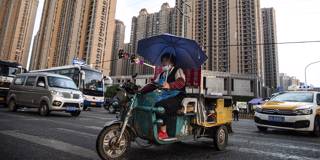As China’s economic slowdown suggests, the next phase of its development is rife with challenges. While China does not have to adopt Western-style liberal democracy to avoid the “middle-income trap” and the Thucydides Trap, it will have to devise a viable alternative.
SEOUL – When Deng Xiaoping launched China’s strategy of “reform and opening up” in 1978, economists in the West had their doubts. In their view, a vibrant market economy was fundamentally incompatible with China’s authoritarian political system. But many in the East – including Koreans like me, who witnessed the East Asian miracle while living under developmental dictatorship – were hopeful. Now that China is the world’s second-largest economy, it seems clear that our optimism was warranted.

SEOUL – When Deng Xiaoping launched China’s strategy of “reform and opening up” in 1978, economists in the West had their doubts. In their view, a vibrant market economy was fundamentally incompatible with China’s authoritarian political system. But many in the East – including Koreans like me, who witnessed the East Asian miracle while living under developmental dictatorship – were hopeful. Now that China is the world’s second-largest economy, it seems clear that our optimism was warranted.